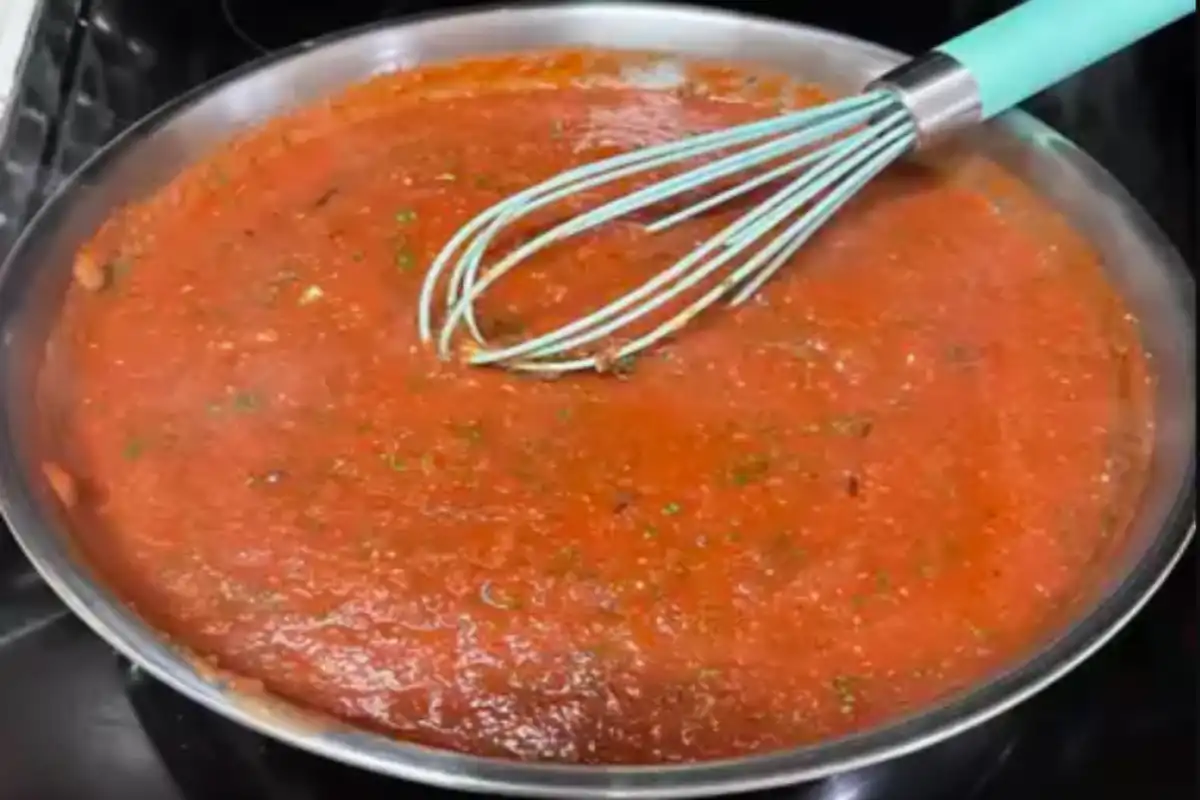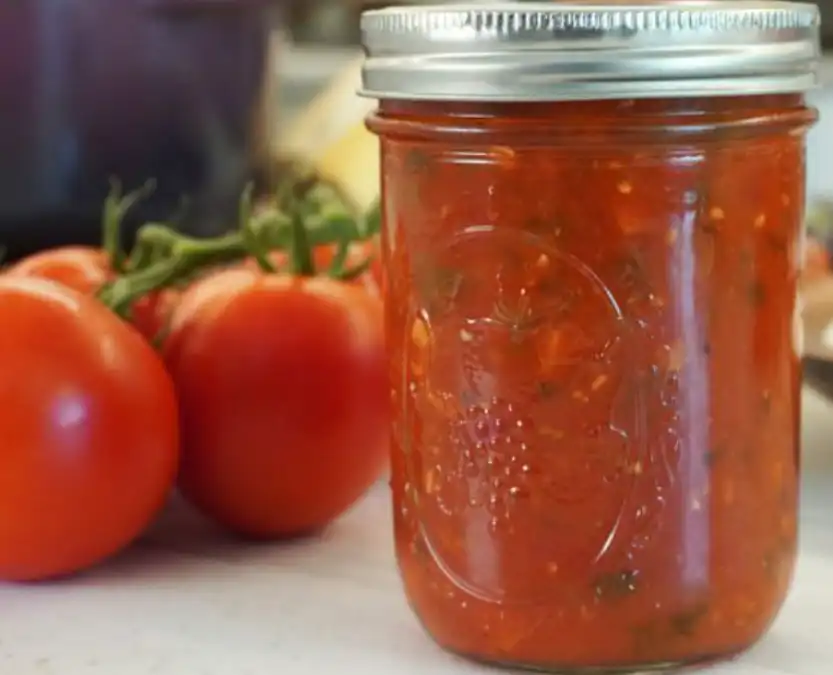Marinara or Tomato Sauce? This seemingly simple choice has puzzled many a home cook and sparked debates among food enthusiasts. What sets these two popular tomato-based sauces apart? Is it just about the thickness or is there more to the story? In this article, “Marinara vs Tomato Sauce: Unraveling the Tasty Truths Behind Your Favorite Sauces,” we’re diving deep into the heart of this savory subject.
Imagine you’re in Italy, the land where these sauces originated. You’re wandering through a bustling market, the aroma of fresh herbs and simmering tomatoes in the air. This isn’t just about recipes; it’s a journey through history, culture, and flavor. We’ll explore the origins, the subtle and not-so-subtle differences in ingredients, and how these impact the flavor, texture, and use of each sauce. From the traditional Italian kitchen to your modern-day meals, we uncover the secrets behind the sauces that have become staples in our culinary world.
Origins and History
The Story of Marinara and Tomato Sauce
Marinara: A Taste of Italian Tradition
Marinara sauce, with its roots deeply embedded in Italian cuisine, is not just a sauce but a reflection of Italian history and simplicity. The word ‘marinara’ itself has maritime connotations, often linked to the idea that it was a sauce prepared by the wives of sailors upon their return from sea. This sauce’s beauty lies in its simplicity, typically made with tomatoes, garlic, herbs, and olive oil. Historically, it’s believed to have originated in Naples, a city known for its rich culinary heritage, around the 16th century when tomatoes made their grand entrance into Europe from the Americas.
Tomato Sauce: A Rich Culinary Evolution
Tomato sauce, on the other hand, offers a glimpse into a more complex culinary evolution. While also tracing its roots back to Italy, its journey encompasses a broader palette of flavors and ingredients. The Italian version, often more refined and varied, includes a mélange of vegetables, meats, and sometimes even a roux, reflecting the regional variations and personal touches of the cooks. The French adaptation, sauce tomate, is one of the five mother sauces in classic French cuisine, showcasing the sauce’s versatility and its influence across various culinary traditions.
The Cultural Impact
Both marinara and tomato sauce have transcended their Italian origins, embedding themselves into the fabric of global cuisine. From the humble beginnings of marinara as a quick, easy sauce for sailors to the sophisticated and versatile tomato sauce adorning dishes worldwide, these sauces are a testament to the power of culinary innovation and cultural exchange.
What is the difference between marinara and tomato sauce?
The Building Blocks of Flavor: Marinara vs. Tomato Sauce
Marinara: Simplicity is Key
Marinara sauce is a testament to the beauty of simplicity in Italian cooking. At its core, marinara is made with a few key ingredients:
- Tomatoes: The star of the show. Plum or paste tomatoes, like the renowned San Marzano, are often preferred for their sweet, low-acid profile.
- Garlic: For that quintessential aromatic kick.
- Herbs: Primarily basil and sometimes oregano, lending a fresh, herbaceous flavor.
- Olive Oil: A drizzle of good quality olive oil for richness.
- Seasonings: A pinch of salt and crushed red pepper flakes for a subtle heat.
These ingredients come together quickly, usually in about an hour, resulting in a sauce that’s light, tangy, and versatile.
Tomato Sauce: Complexity and Depth
Tomato sauce, by contrast, is a rich tapestry of flavors, often involving a longer list of ingredients and a more involved cooking process:
- Soffritto Base: A mixture of finely chopped onions, carrots, and celery, sautéed in olive oil or butter, forming a flavorful foundation.
- Tomatoes: Like marinara, tomatoes are central, but the variety can vary. Some recipes call for fresh tomatoes, while others use canned.
- Meat: In many traditional recipes, meats like salt pork, bacon, or even veal stock are included for depth.
- Herbs and Spices: Beyond basil and oregano, bay leaves, garlic, and other seasonings are added.
- Roux: In some variations, especially the French sauce tomate, a roux of flour and butter is used to thicken the sauce.
The cooking process for tomato sauce is longer, often requiring several hours. This allows the flavors to meld and deepen, resulting in a sauce that is rich, thick, and complex.
The Impact of Ingredients on Flavor and Texture
The choice of ingredients in both sauces not only defines their distinct flavors but also their textures. Marinara’s fewer ingredients lead to a lighter, more fluid sauce, ideal for dishes where the sauce is not the centerpiece. In contrast, the complexity and variety of ingredients in tomato sauce yield a thicker, more robust sauce, suited for heartier dishes where the sauce plays a starring role.
Flavor and Texture
Marinara’s Freshness vs. Tomato Sauce’s Richness
Marinara: Light and Bright
Marinara sauce delights the palate with its straightforward, fresh flavor. Here’s what makes it stand out:
- Fresh and Tangy: The quick cooking process preserves the tomatoes’ natural acidity and brightness, offering a tangy taste.
- Herb-Forward: The presence of basil and sometimes oregano imparts a noticeable herby freshness.
- Garlic Notes: The garlic in marinara is often more pronounced, adding a pungent, aromatic layer.
- Texture: Marinara’s texture is relatively thin and smooth, making it perfect for lightly coating pasta or as a dipping sauce.
This sauce is all about highlighting the natural flavors of its few ingredients, offering a light and refreshing option in the world of tomato-based sauces.
Tomato Sauce: Depth and Complexity
Tomato sauce, meanwhile, is a journey through deeper, more nuanced flavors:
- Rich and Savory: The longer cooking time caramelizes the sugars in the tomatoes, creating a richer, almost sweet profile.
- Layered Flavors: The addition of a soffritto base, meats, and a variety of herbs and spices contribute to a more complex taste.
- Textural Richness: With its thicker, more robust body, tomato sauce clings to and envelops the pasta, delivering a hearty eating experience.
This sauce is a symphony of flavors, each ingredient adding its note to create a harmonious and rich culinary experience.
How Flavor and Texture Influence Dishes
The distinct flavors and textures of marinara and tomato sauce are not just mere differences; they dictate the dishes they best complement. Marinara, with its lighter body and brighter taste, is ideal for simpler dishes where it supports but doesn’t overpower the main ingredients. Tomato sauce, in contrast, is the star of the show in many recipes, providing a substantial and flavorful base for a variety of classic and innovative dishes.
In the Kitchen: Culinary Uses and Pairings
Matching Sauces with Dishes
Marinara: Versatile and Light
Marinara sauce, with its bright and tangy flavor, shines in dishes that require a touch of tomato without overwhelming the other ingredients. Here are some classic pairings:
- Pasta Dishes: Ideal for simple pasta recipes, where the sauce gently coats the noodles, like spaghetti alla marinara.
- Pizza: A thin layer of marinara is perfect for classic pizza Margherita, enhancing but not dominating the toppings.
- Seafood: Works wonderfully in seafood pasta or as a dipping sauce for fried calamari, enhancing the delicate flavors of the seafood.
- Appetizers: Excellent as a dipping sauce for mozzarella sticks or breadsticks.
Marinara’s lightness makes it a flexible sauce, capable of enhancing a variety of dishes without taking center stage.
Tomato Sauce: Rich and Flavorful
Tomato sauce, with its depth and richness, is the go-to for heartier, more robust dishes:
- Hearty Pasta Dishes: Ideal for lasagna, baked ziti, or spaghetti with meatballs, where its thickness and richness complement the other ingredients.
- Braised Meats: A perfect base for slow-cooked dishes like osso buco or chicken caciatore.
- Stews and Soups: Adds body and flavor to minestrone or Italian-style stews.
- Egg Dishes: A flavorful addition to shakshouka or eggs in purgatory.
The complexity and robustness of tomato sauce make it suitable for dishes that require a substantial, flavor-packed base.
Balancing Flavors and Textures
When choosing between marinara and tomato sauce, consider the overall balance of your dish. Marinara is your ally in lighter, simpler dishes where subtlety is key. Tomato sauce, conversely, is your choice for dishes that need a rich, flavorful foundation. Understanding these nuances will elevate your cooking, allowing each sauce to shine in its rightful place.
Nutrition and Health: What’s on Your Plate?
Comparing the Wellness Quotient of Marinara and Tomato Sauce
Marinara: A Healthier Choice?
Marinara sauce is often considered a healthier option due to its simple ingredient list and lighter preparation. Here’s why:
- Lower Calorie Content: With fewer ingredients, especially the absence of meats and a roux, marinara typically has fewer calories.
- Fresh Ingredients: Using fresh herbs and minimal processing means more natural nutrients are retained.
- Heart-Healthy: Olive oil, a key ingredient, is known for its heart-healthy fats.
- Lower in Fat: Generally, marinara has a lower fat content compared to richer tomato sauces.
Marinara can be a great choice for those looking for a healthier sauce option that doesn’t compromise flavor. If you’re seeking a comforting and healthy dish, explore our Italian Penicillin Soup recipe, blending wellness and rich flavor in every spoonful.
Tomato Sauce: Nutritional Considerations
While tomato sauce can be higher in calories and fat due to its richer ingredients, it also offers nutritional benefits:
- Rich in Lycopene: Tomatoes are a great source of lycopene, an antioxidant linked to various health benefits.
- Vegetable Intake: The soffrito base adds a variety of vegetables to your diet.
- Flavor without Added Sugar: Unlike some processed sauces, homemade tomato sauce can be rich in flavor without the need for added sugars.
However, when using tomato sauce, it’s important to be mindful of portion sizes and the richness of other ingredients in the dish. To understand the nutritional impact of these sauces, explore the health benefits of tomatoes, as outlined by the Cleveland Clinic.
Diet and Lifestyle Considerations
Both marinara and tomato sauce can fit into a balanced diet, but their nutritional profiles cater to different needs and preferences. For those seeking lighter fare or managing calorie intake, marinara is an excellent choice. Tomato sauce, with its richer profile, is more suited for indulgent meals or when a heartier sauce is desired.
Variations and Regional Twists
How Marinara and Tomato Sauce Travel
Marinara: Adapting to Local Tastes
Marinara, while deeply rooted in Italian cuisine, has been embraced and adapted worldwide, reflecting local ingredients and culinary preferences. Here’s how it varies:
- American Twist: In the U.S., marinara might include a bit more garlic and herbs, catering to a preference for stronger flavors.
- Mediterranean Influences: In Mediterranean regions, you might find marinara with added capers or olives, incorporating local produce.
- Vegetarian Variations: Globally, many versions have emerged that emphasize vegetarian ingredients, aligning with increasing dietary trends.
Tomato Sauce: A Canvas for Creativity
Tomato sauce, with its rich and versatile nature, has been reinvented in various cuisines:
- French Elegance: The French sauce tomate often includes a roux and richer meats, reflecting a more luxurious approach.
- American Adaptations: In the U.S., tomato sauce is often the base for meaty, hearty dishes like meatball subs or Chicago-style deep-dish pizza.
- Fusion Flavors: Across the world, chefs use tomato sauce as a base to experiment with, blending it with spices and ingredients from their local culinary traditions.
The Influence of Regional Ingredients
The variations in marinara and tomato sauce across the world highlight the adaptability of these sauces to regional tastes and available ingredients. From the addition of seafood in coastal areas to the incorporation of local vegetables and spices, these sauces are a reflection of the diversity and creativity inherent in global cuisine.
Home Chef’s Guide: Cooking Tips and Tricks
Mastering Marinara and Tomato Sauce in Your Kitchen
Crafting the Perfect Marinara
Marinara sauce, known for its simplicity, can be elevated with a few key tips:
- Choose the Right Tomatoes: Opt for high-quality canned San Marzano or fresh plum tomatoes for the best flavor.
- Garlic Technique: Sauté the garlic just until fragrant to avoid bitterness.
- Herb Timing: Add fresh herbs like basil towards the end of cooking to preserve their vibrant flavor.
- Simmering: Allow the sauce to simmer uncovered, letting the flavors concentrate and the sauce thickens to the desired consistency.
Marinara is forgiving and adaptable, making it a great starting point for novice cooks. For a delightful twist on the classic, try our Five-Cheese Marinara recipe, perfect for cheese lovers looking to elevate their pasta dishes.
Elevating Your Tomato Sauce
Tomato sauce requires a bit more finesse, but these tips can help you achieve a rich, flavorful result:
- Building the Base: Start with a soffitto of finely chopped onions, carrots, and celery, cooking them until they’re soft and aromatic.
- Layering Flavors: Incorporate ingredients like garlic, herbs, and meats (if using) in stages to build depth.
- Low and Slow Cooking: Simmer the sauce over low heat for several hours to allow the flavors to meld and the sauce to thicken.
- Balancing Acidity: If the sauce is too acidic, a touch of sugar can help balance it. However, be cautious with the amount.
Remember, making tomato sauce is as much about patience as it is about ingredients.
Adapting Recipes to Your Taste
Both marinara and tomato sauce are versatile and can be adjusted to suit personal preferences. Don’t be afraid to experiment with different herbs, spices, or ingredients to create a sauce that’s uniquely yours.
FAQs Section
Is marinara sauce the same as tomato sauce?
- No, they are not the same. Marinara is a simpler, quicker sauce with fewer ingredients, while tomato sauce is thicker, richer, and more complex, often including meats and a longer cooking time.
Can I substitute marinara for tomato sauce?
- Yes, you can substitute marinara for tomato sauce in recipes, but keep in mind that it will change the dish’s flavor and texture. Marinara is lighter and simpler, while tomato sauce is more robust and complex.
What’s the difference between Domino’s tomato sauce and marinara sauce?
- The main difference lies in their flavor profile and consistency. Domino’s tomato sauce may be specifically formulated for their pizzas, likely richer and thicker than a standard marinara sauce.
What is healthier: marinara or tomato sauce?
- Generally, marinara is considered healthier due to its simpler ingredient list and lower calorie content. However, both can be part of a healthy diet when consumed in moderation.
While marinara and tomato sauce share a common base of tomatoes, these sauces distinguish themselves in flavor, texture, and use:
- Marinara: A symbol of simplicity and freshness, perfect for light pasta dishes, and pizzas, and as a dipping sauce. Its health-conscious profile makes it a favorite among those seeking lighter, quicker meals.
- Tomato Sauce: The epitome of depth and richness, ideal for hearty, comforting dishes like lasagna, braised meats, and robust pasta creations. Its complex flavor profile allows it to be a standout component in a variety of recipes.
Remember, the best sauce is the one that suits your taste, complements your dish, and brings joy to your table. So, go ahead, cook, taste, and enjoy the delicious diversity of marinara and tomato sauce.




1 thought on “Marinara vs Tomato Sauce: Key Differences”